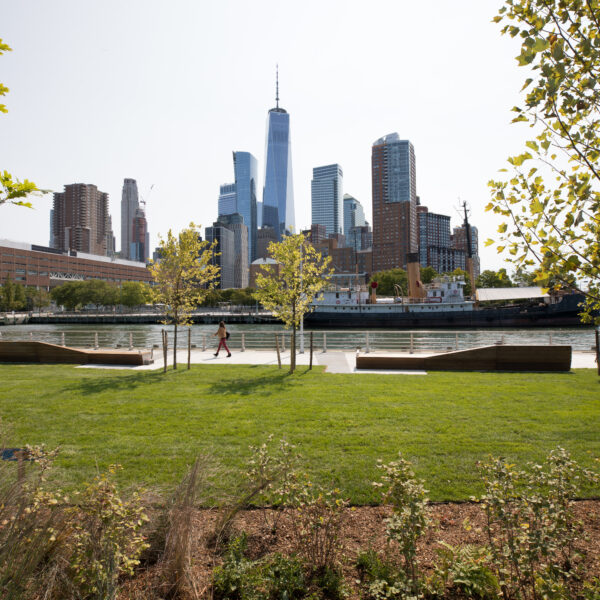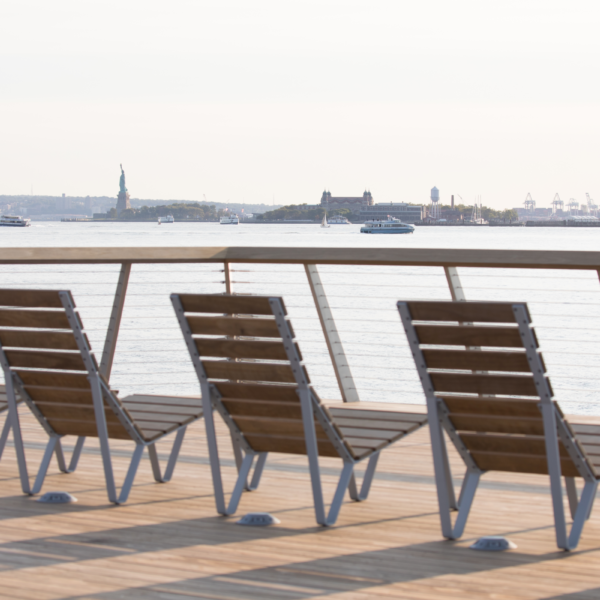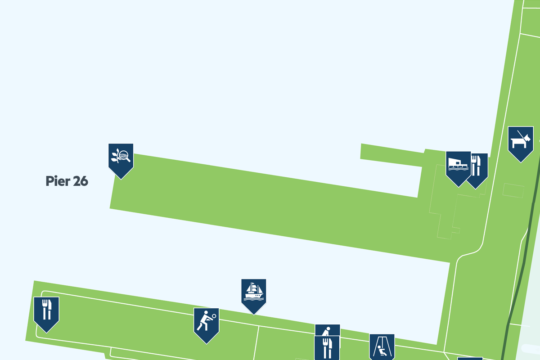This 2.5-acre ecologically-themed pier in Tribeca incorporates indigenous plants evocative of Manhattan’s ecosystem prior to human development. A short habitat walk leads visitors through five native ecological zones: woodland forest, coastal grassland, maritime scrub, rocky tidal zone, and of course the Hudson River. A sunning lawn and a sports play area make Pier 26 — already popular with the Downtown Boathouse (New York’s busiest non-motorized boathouse) and City Vineyard — a place to please everyone.
Tide Deck
In addition to a multi-use recreation field, spacious lawn, boardwalks and seating areas, Pier 26 features an innovative, engineered Tide Deck. Located at the western edge of the pier, the Tide Deck is a cultivated rocky salt marsh created to provide an immersive and educational river ecology experience. The elevated cantilevered walkway above the Tide Deck provides spectacular city and River views. At certain times, the Tide Deck is accessible for guided tours by Park staff. Learn more about the Tide Deck.
Learn more about the origins of Pier 26, an exciting public green space.
Dining and Boating
If you are looking to enjoy a riverside meal, occasional music or simply a beverage, City Vineyard is the place to go for stunning sunsets and Downtown views. You’ll find local, fresh ingredients paired perfectly with wine made here in NYC.
At the Pier 26 Boathouse, you will also find the Downtown Boathouse, which originated public kayaking programming along the Hudson River. Their volunteers put 28,000 on the water each year, all for FREE.
Oysters
Not so long ago, New York Harbor was covered with oyster reefs, so much so that eating oysters was a cheap way to eat out. In the nineteenth century, oysters declined due to overharvesting and water pollution. Today, throughout the Harbor, oysters are starting to make a comeback, mostly as a result of intentional seeding and habitat enhancement projects.
In 2017, Hudson River Park’s Science and Education team made a thrilling discovery beneath Pier 25: hundreds of wild oysters on the underside of some pier docks. Oysters are filter feeders that clean waterways. In addition, oyster reefs provide habitat for many species. With these incredible benefits in mind, Hudson River Park is committed to growing the oyster population in our Estuarine Sanctuary through research and partnerships. Learn more about our River Project’s oyster research.
Additional funding for the design and construction of Pier 26 provided by:





